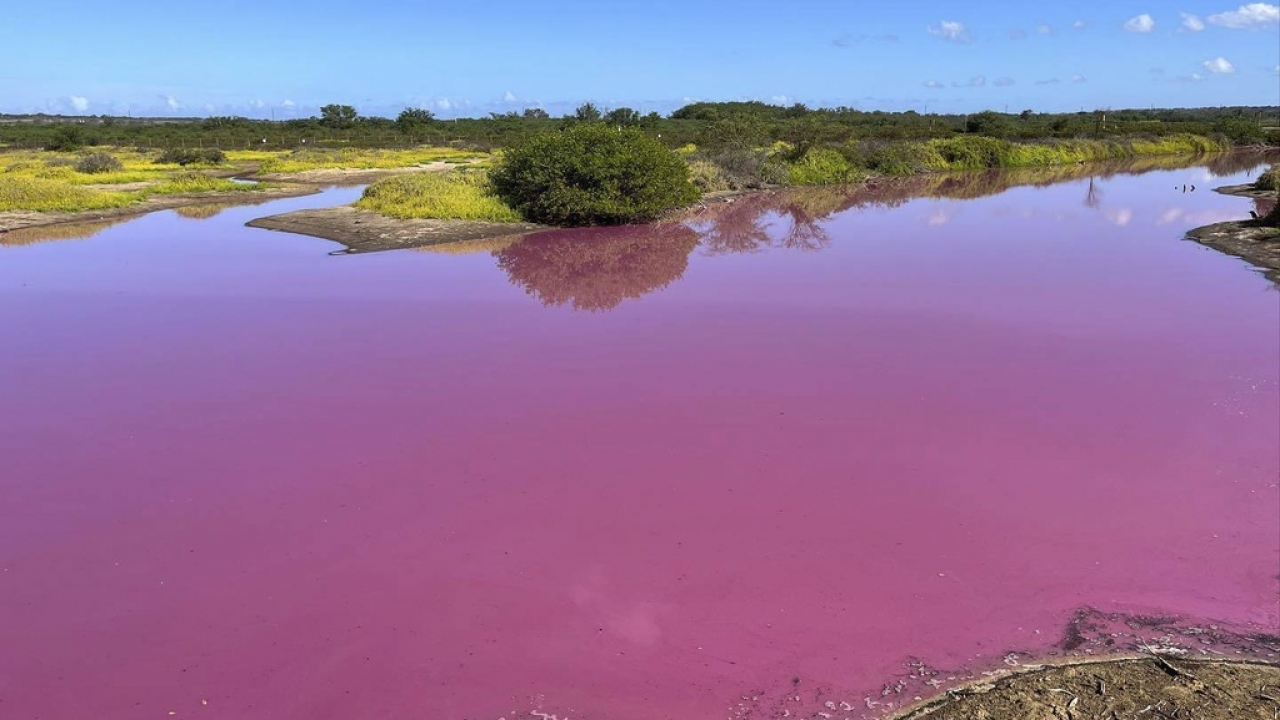A natural phenomenon has turned a pond in Hawaii bright pink, and while it may look like Pepto-Bismol, no, you should not drink it.
Since Oct. 30, the staff at Kealia Pond National Wildlife Refuge in Maui have been monitoring the water and say they believe it's not dangerous algae but a “single-celled organism called halobacteria” making the water bubble-gum pink.
Halobacteria are organisms that thrive in highly salty water environments, and officials say currently, the water in the Kealia Pond outlet has a salinity exceeding 70 parts per thousand, which is twice as salty as seawater. Samples of water have been collected and sent to the University of Hawaii for further testing.
“It is this high-salinity water in the outlet that is providing favorable conditions for the halobacteria, producing the pink color,” officials said in a press release. “UH is doing more analyses to determine the exact strain of the halobacteria. We will be continuing to gather information and will keep the public informed.”
According to Bret Wolfe, the wildlife refuge manager, Maui's drought is probably contributing to the situation.
Normally, the Waikapu Stream adds water to Kealia Pond, but that hasn't happened for a while, Wolfe told the Associated Press. When it rains, the stream flows into Kealia's main pond, reducing its salinity.
While the pond has experienced drought and high salinity before, Wolfe says no one has seen the pond this color, at least not in the last 70 years.
As a safety measure during water analysis, authorities advise visitors and locals to avoid drinking the water, swimming in the water, consuming fish from the water, and letting pets drink it.
The refuge is a vital wetland for endangered bird species, offering nesting, feeding and resting spaces, which is why authorities are also telling curious visitors to avoid using drones as it could disrupt the birds.


